The Duchess of Malfi, Sam Wanamaker Playhouse | reviews, news & interviews
The Duchess of Malfi, Sam Wanamaker Playhouse
The Duchess of Malfi, Sam Wanamaker Playhouse
A bright opening for London's shadowy and atmospheric new theatre
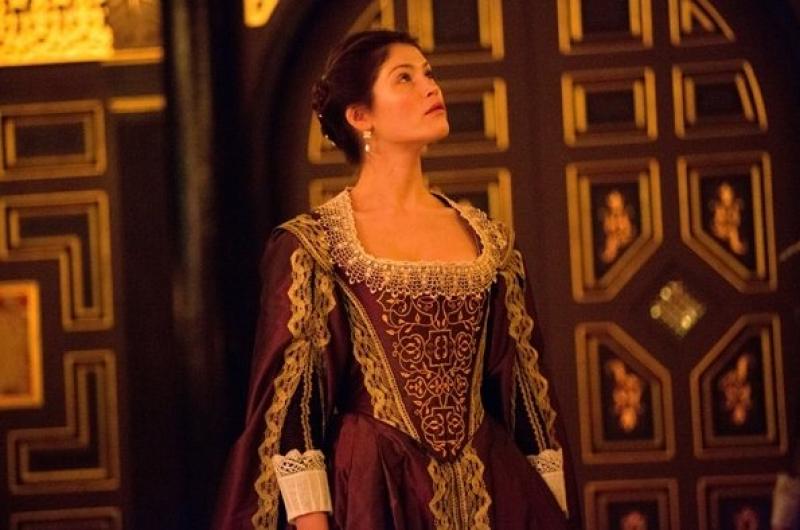
A candlelit theatre is one thing. A theatre when those candles are so close you could lean in and blow them out, where a good line sets them flickering in gusts of audience laughter is quite another. We’ve been spoilt by the Globe for almost 20 years now, and the novelty of its open-air theatre still feels fresh. With the new, Jacobean-inspired Sam Wanamaker Playhouse (capacity just 340), they have done it again.
While the rest of Wanamaker’s opening season gets more experimental and exploratory, the new theatre was launched last night with a classic Jacobean revenge tragedy (and the closest the period gets to a big hit) – John Webster’s The Duchess of Malfi. It’s a work that cuts deeper into the psychology of its victims than earlier favourites such as The Spanish Tragedy or The Revenger’s Tragedy, and much closer in spirit to the Shakespeare that Globe audiences are used to.
Arterton’s Duchess is all woman to the exclusion of her greatness
The tale of the violent revenge of two noble brothers on their widowed sister for remarrying against their wishes hangs on the character of the Duchess herself. The question of “…whether the spirit of greatness or woman reign most in her” is the essential one, the pivot on which readings differ. In the hands of director Dominic Dromgoole and Gemma Arterton she is poised and charming – we can well believe in the woman who “winked and chose a husband”. She dominates, both conversationally and sexually, her initial encounter with Antonio (Alex Waldmann), trills her way deliciously through Monteverdi madrigals and eats apricots with as confident a sensuality as any suspicious brother could hope to see.
The trouble is that Arterton doesn’t ever really get beyond this. “I am Duchess of Malfi still,” she proclaims before her death, and here she really does remain the same person. Arterton’s Duchess is all woman to the exclusion of her greatness. Beautifully spoken, and engaging to watch, there’s just not enough scope, not enough at stake to carry the extremity of this tragedy. Just occasionally, even in the dimly lit theatre, there were flashes of nicely brought-up English public schoolgirl in this Jacobean heroine.
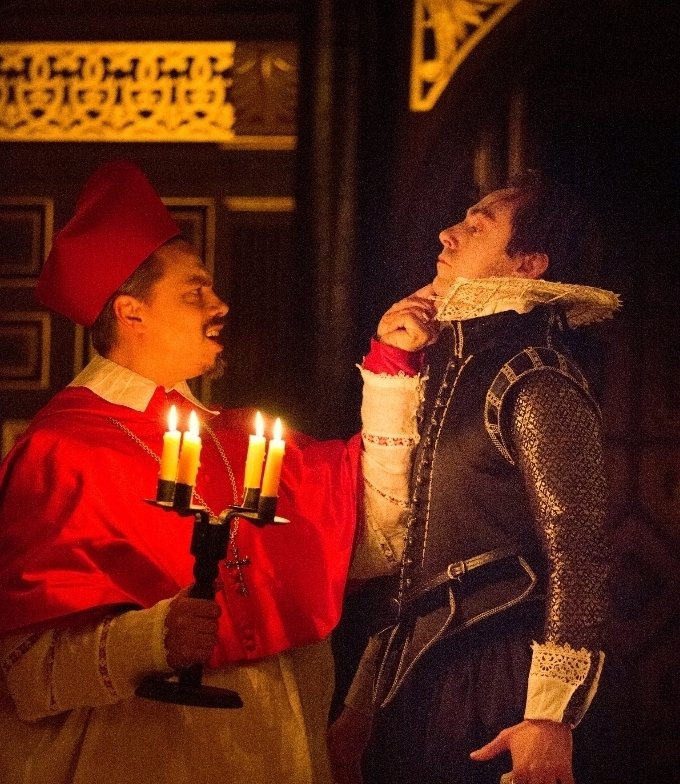 Carrying the play’s darkest drama as the murderous brothers, David Dawson (Duke Ferdinand) and the Cardinal (James Garnon, pictured right with Dawson). Garnon, as usual, does less to wonderful effect. Never over-egging his licentious churchman, he finds both the humour and human weakness in a man pleasantly surprised to discover his “tedious” conscience, and the horror of his dispassionate cruelty. Dawson offers the nervous tension to Garnon’s stillness, moving from repressed and confused passion to madness with horrible seamlessness, and making something properly pathetic from the transition. Webster leaves the brothers’ motivation unexplained, and hints of incestuous affection are plausibly realised by Dawson’s confused and unpredictable physicality – ever a lunge away from the greatest taboo.
Carrying the play’s darkest drama as the murderous brothers, David Dawson (Duke Ferdinand) and the Cardinal (James Garnon, pictured right with Dawson). Garnon, as usual, does less to wonderful effect. Never over-egging his licentious churchman, he finds both the humour and human weakness in a man pleasantly surprised to discover his “tedious” conscience, and the horror of his dispassionate cruelty. Dawson offers the nervous tension to Garnon’s stillness, moving from repressed and confused passion to madness with horrible seamlessness, and making something properly pathetic from the transition. Webster leaves the brothers’ motivation unexplained, and hints of incestuous affection are plausibly realised by Dawson’s confused and unpredictable physicality – ever a lunge away from the greatest taboo.
Denise Gough’s Julia is unusually captivating, making a story-not-fully-told of this secondary woman, who (as UA Fanthorpe has it) is "Only here for the bier". Likewise Sean Gilder’s assassin Bosola makes an unusually plausible shift from hired muscle to moral compass, making up for Waldmann’s Antonio who, through no fault of his own, can’t quite escape the narrow confines of Webster’s weakest writing.
Much of Dromgoole’s enthusiasm about the new theatre is its role as dramatic touchstone, revealing new aspects of familiar plays. Here, with irony DH Lawrence might enjoy, darkness proves the most revealing thing of all. The scene in which Ferdinand tricks his sister into taking hold of a waxwork imitation of her husband’s severed hand becomes much less B-movie horror in total blackout, while the mistaken identities of the final conflict between Bosola and Antonio is almost natural. Comedies hinging on such tricks might flourish here, and might feed better off the confronting intimacy of the setup than tragedy. Malfi provoked more laughter than I’ve ever heard, much of which must have been the product of discomfort peculiar to the combination of emotional extremity and physical proximity.
Gilded, gorgeously costumed and decked out with all the signature Globe trappings of music and dance, the debut production at the Sam Wanamaker Playhouse is one to see. Unfortunately, even if you’re lucky enough to have one of the few tickets, you may not actually glimpse that much of the action in the only space in London whose sightlines are worse than the Royal Opera House. It might have worked once, but in the age of the cinema and the iPad theatre-goers might feel a little less tolerant.
GEMMA ARTERTON ON STAGE AND SCREEN
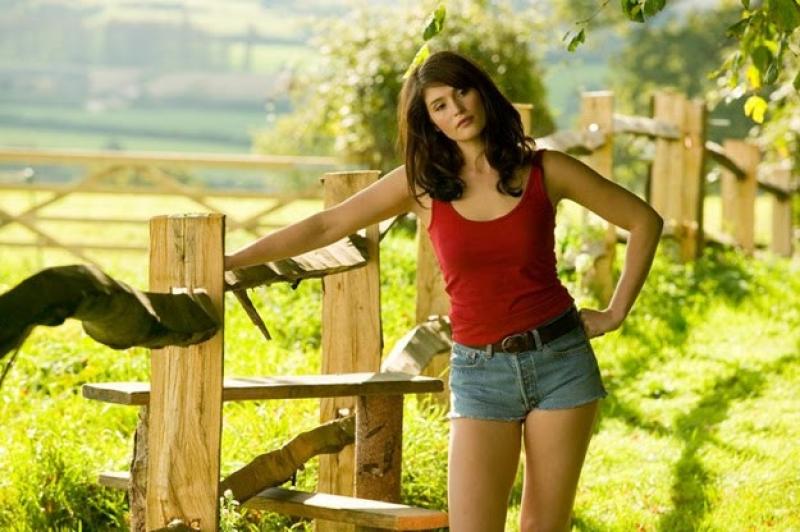 Tamara Drewe (2010). Arterton plays Posy Simmonds's modern Hardy heroine (pictured right) in barbed rural romp shot by Stephen Frears
Tamara Drewe (2010). Arterton plays Posy Simmonds's modern Hardy heroine (pictured right) in barbed rural romp shot by Stephen Frears
The Master Builder, Almeida Theatre (2010). Arterton stars opposite Stephen Dillane as passions blow hot and cold in uneven take on Ibsen
Clash of the Titans (2010). Arterton comes up Persil white as the Olympians of Tinseltown plan a classical killing in 3D
Prince of Persia: The Sands of Time (2010). Fantastical desert epic beguiles the eye while deep-freezing the brain
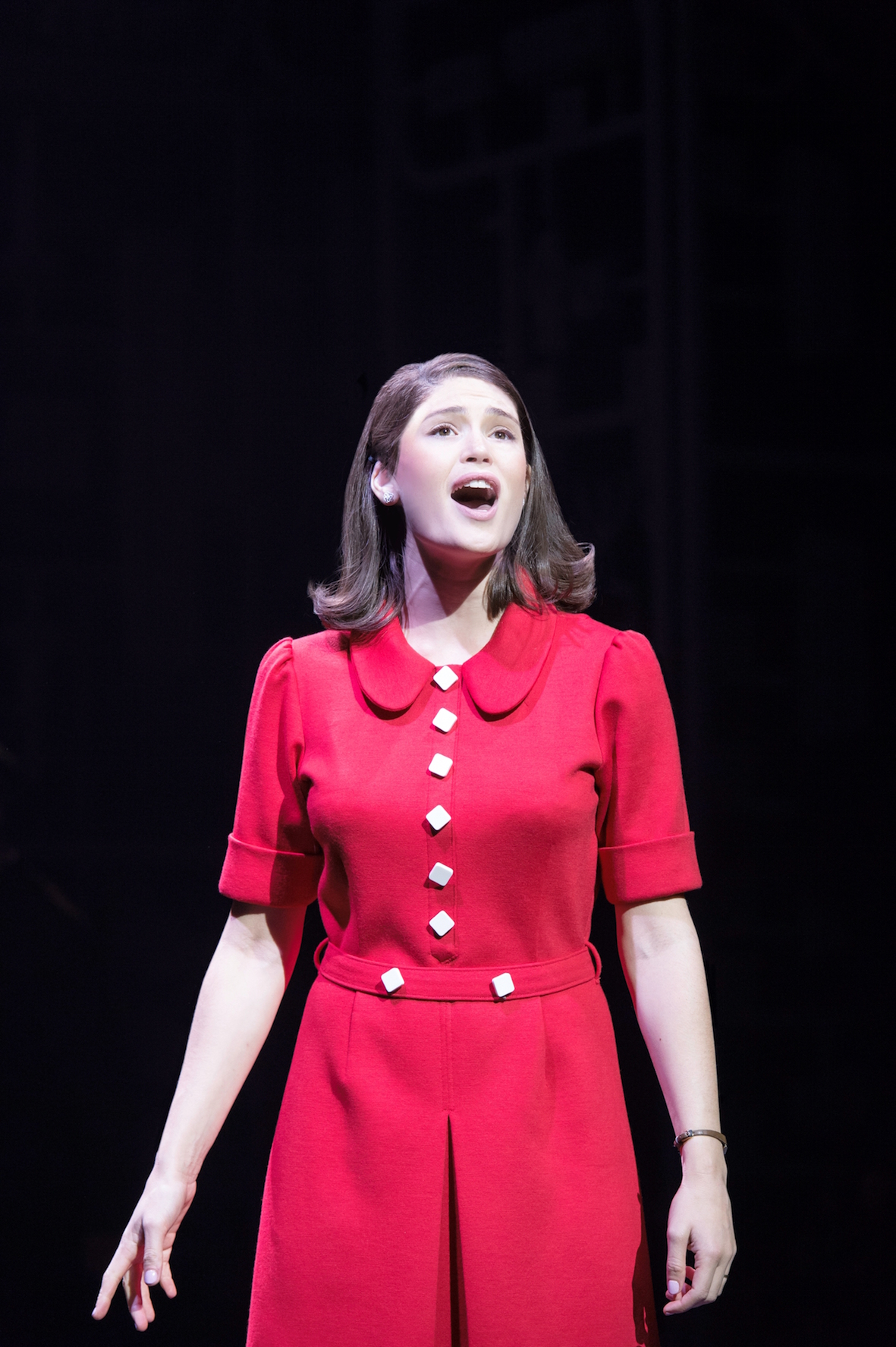 The Little Dog Laughed, Garrick Theatre (2010). Arterton plays straight woman to Tamsin Greig's mega-star comic turn in Broadway satire
The Little Dog Laughed, Garrick Theatre (2010). Arterton plays straight woman to Tamsin Greig's mega-star comic turn in Broadway satire
Byzantium (2013). Arterton is va-va-voom vampy in Neil Jordan's return to bloodsucking
Song for Marion (2013). Under Arterton's tutelage, Terence Stamp and Vanessa Redgrave work the tear ducts in paean to old age
Made in Dagenham, Adelphi Theatre (2014). Arterton reveals great pipes as she takes on the bosses in musical version of the 1968 struggle for equal pay (pictured above by Manuel Harlan)
The Voices (2015). Arterton is Ryan Reynolds' victim in Marjane Satrapi's surreal portrait of an American psycho
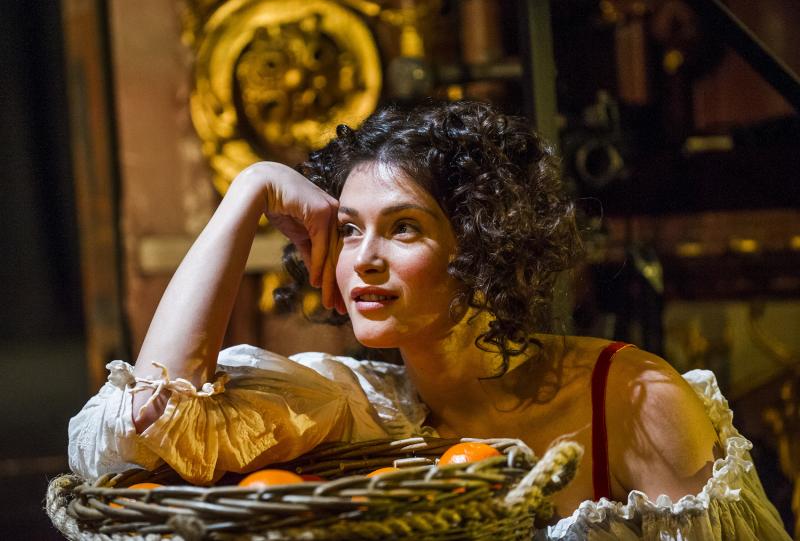 Nell Gwynn, Apollo Theatre (2016). Arterton charms king and audience in West End outing for the Globe's jolly Restoration romp (pictured by Tristram Kenton)
Nell Gwynn, Apollo Theatre (2016). Arterton charms king and audience in West End outing for the Globe's jolly Restoration romp (pictured by Tristram Kenton)
The Girl With All the Gifts (2016). Bestselling dystopian book reborn as underpowered movie
Saint Joan, Donmar Warehouse (2016). Revival of Shaw classic is a tour de force for near-miraculous Arterton
Their Finest (2017). Resoundingly British and sheerly enjoyable story of filmmakers joining the fight against Hitler
rating
Explore topics
Share this article
The future of Arts Journalism
You can stop theartsdesk.com closing!
We urgently need financing to survive. Our fundraising drive has thus far raised £49,000 but we need to reach £100,000 or we will be forced to close. Please contribute here: https://gofund.me/c3f6033d
And if you can forward this information to anyone who might assist, we’d be grateful.

Subscribe to theartsdesk.com
Thank you for continuing to read our work on theartsdesk.com. For unlimited access to every article in its entirety, including our archive of more than 15,000 pieces, we're asking for £5 per month or £40 per year. We feel it's a very good deal, and hope you do too.
To take a subscription now simply click here.
And if you're looking for that extra gift for a friend or family member, why not treat them to a theartsdesk.com gift subscription?
more Theatre
 The Maids, Donmar Warehouse review - vibrant cast lost in a spectacular-looking fever dream
Kip Williams revises Genet, with little gained in the update except eye-popping visuals
The Maids, Donmar Warehouse review - vibrant cast lost in a spectacular-looking fever dream
Kip Williams revises Genet, with little gained in the update except eye-popping visuals
 Ragdoll, Jermyn Street Theatre review - compelling and emotionally truthful
Katherine Moar returns with a Patty Hearst-inspired follow up to her debut hit 'Farm Hall'
Ragdoll, Jermyn Street Theatre review - compelling and emotionally truthful
Katherine Moar returns with a Patty Hearst-inspired follow up to her debut hit 'Farm Hall'
 Troilus and Cressida, Globe Theatre review - a 'problem play' with added problems
Raucous and carnivalesque, but also ugly and incomprehensible
Troilus and Cressida, Globe Theatre review - a 'problem play' with added problems
Raucous and carnivalesque, but also ugly and incomprehensible
 Clarkston, Trafalgar Theatre review - two lads on a road to nowhere
Netflix star, Joe Locke, is the selling point of a production that needs one
Clarkston, Trafalgar Theatre review - two lads on a road to nowhere
Netflix star, Joe Locke, is the selling point of a production that needs one
 Ghost Stories, Peacock Theatre review - spirited staging but short on scares
Impressive spectacle saves an ageing show in an unsuitable venue
Ghost Stories, Peacock Theatre review - spirited staging but short on scares
Impressive spectacle saves an ageing show in an unsuitable venue
 Hamlet, National Theatre review - turning tragedy to comedy is no joke
Hiran Abeyeskera’s childlike prince falls flat in a mixed production
Hamlet, National Theatre review - turning tragedy to comedy is no joke
Hiran Abeyeskera’s childlike prince falls flat in a mixed production
 Rohtko, Barbican review - postmodern meditation on fake and authentic art is less than the sum of its parts
Łukasz Twarkowski's production dazzles without illuminating
Rohtko, Barbican review - postmodern meditation on fake and authentic art is less than the sum of its parts
Łukasz Twarkowski's production dazzles without illuminating
 Lee, Park Theatre review - Lee Krasner looks back on her life as an artist
Informative and interesting, the play's format limits its potential
Lee, Park Theatre review - Lee Krasner looks back on her life as an artist
Informative and interesting, the play's format limits its potential
 Measure for Measure, RSC, Stratford review - 'problem play' has no problem with relevance
Shakespeare, in this adaptation, is at his most perceptive
Measure for Measure, RSC, Stratford review - 'problem play' has no problem with relevance
Shakespeare, in this adaptation, is at his most perceptive
 The Importance of Being Earnest, Noël Coward Theatre review - dazzling and delightful queer fest
West End transfer of National Theatre hit stars Stephen Fry and Olly Alexander
The Importance of Being Earnest, Noël Coward Theatre review - dazzling and delightful queer fest
West End transfer of National Theatre hit stars Stephen Fry and Olly Alexander
 Get Down Tonight, Charing Cross Theatre review - glitz and hits from the 70s
If you love the songs of KC and the Sunshine Band, Please Do Go!
Get Down Tonight, Charing Cross Theatre review - glitz and hits from the 70s
If you love the songs of KC and the Sunshine Band, Please Do Go!
 Punch, Apollo Theatre review - powerful play about the strength of redemption
James Graham's play transfixes the audience at every stage
Punch, Apollo Theatre review - powerful play about the strength of redemption
James Graham's play transfixes the audience at every stage

Add comment